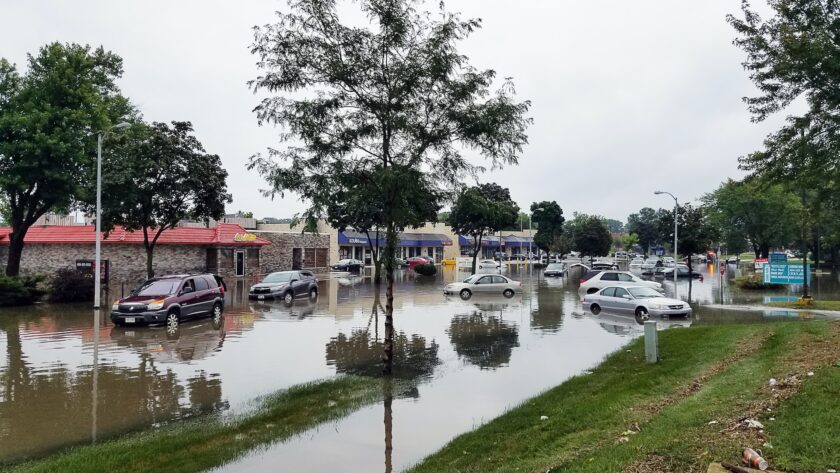Everyone should consider buying insurance whether they live in a flood zone. The insurance can help cover repairs to a home and its contents. Many homeowners mistakenly think that they don’t need insurance because they’re not in a flood zone. But flooding can occur anywhere. And the extreme weather of recent years has reminded people how vulnerable they are.
Contents
Coverage for Damage to Your Home
Recent massive flooding across the United States reminds us of how dangerous and expensive flooding can be. Many homeowners’ insurance policies do not cover this type of damage. Even a few inches of water can cause damage worth thousands of dollars. A flood insurance program in Virginia is essential because of this.
The National Flood Insurance Program offers various products, including Standard Flood Insurance and Preferred Risk Policies. The federal government backs these NFIP policies. Mortgage lenders may also require homeowners in high-risk areas to buy NFIP policies. Unlike standard homeowners ‘ and renters ‘ insurance, NFIP policies cover your home or personal property, which doesn’t include water damage coverage. The policies also cover mold remediation and debris removal.
NFIP offers building and contents insurance up to $250,000. This includes a deductible. The policies also pay for items at the actual cash value, not replacement cost. It is simple to purchase flood insurance. Ask your agent about flood insurance. There is usually a 30-day wait between buying your policy and its implementation.
Coverage for Damage to Your Personal Property
You’ll have to pay for the repairs or replacements after a flood. Flood insurance provides cash payments to homeowners for repairing or replacing personal property, such as furniture, appliances, and clothing. Private insurers or the National Flood Insurance Program can provide a policy for residential or non-residential properties.
The NFIP policies are usually less expensive than those of private insurers. Your lender may require that you purchase NFIP insurance if you have a loan. Renters can get only content coverage through the NFIP, but homeowners can also purchase coverage for their building and contents. The NFIP streamlines claims to make it easier for homeowners and renters to recover.
Flood insurance is not covered by standard renter or homeowner insurance policies. Entering your address into FEMA’s flood map portal will show you if you live in a flood-prone area. You should buy flood insurance if you see Zone A or V.
People often think they do not need flood insurance because they don’t reside in a high-risk area. However, a significant flood can affect even homes in moderate or low-risk areas. Even a slight rise in water can cause significant damage.
Coverage for Damage to Your Personal Effects
Most standard homeowners, condo, or renters insurance policies don’t cover flood damage. You must buy a separate flood policy from a private insurer or the National Flood Insurance Program (NFIP). NFIP provides both building and content coverage for homeowners in communities that participate in the program. According to FEMA, the average flood damages more than $25,000 worth of property.
That’s a lot of money for even the most well-off families to come up with, and it’s one of many reasons that those living in moderate- and low-risk areas should consider purchasing flood insurance. With a standard NFIP policy, you can get up to $250,000 in building coverage and $100,000 in content coverage.
Most of these policies also include up to $30,000 in increased cost of compliance coverage (also called ordinance or law coverage). This protects you if flooding substantially damages your home and the government requires you to rebuild according to local codes. If you live in an area at low risk of flood damage, you can weigh the cost against your risk tolerance and decide against getting an NFIP flood policy.
Coverage for Damage to Your Business
In addition to protecting the structure of your home and the personal items inside, a flood insurance policy also covers business loss. According to the National Flood Insurance Program (NFIP), a “flood” is “a general and temporary condition when an excess of water normally covers dry land or adjacent property.”
Although flooding is most often associated with coastal areas, it can occur anywhere. The NFIP reports that 20 percent of all claims originate in areas not considered high-risk. With climate change making flooding more frequent and intense, property owners must consider flood insurance a proactive step toward maintaining financial safety.
Flood insurance is mandatory for homeowners in high-risk zones if you have a federally backed mortgage. However, many homeowners must purchase or let their flood insurance policies lapse. This can be a huge mistake since standard homeowners’ policies do not cover the damage and loss incurred by floods. In addition to buying flood insurance, homeowners and business owners can help mitigate the impact of flooding by taking preventative measures to protect their properties.
This includes moving furniture and electronics to higher floors, elevating appliances, clearing gutters, and using sandbags to block gaps where floodwater could enter. Additionally, shutting off the power at your breaker box is crucial if you suspect your home may be in danger of losing electricity.




